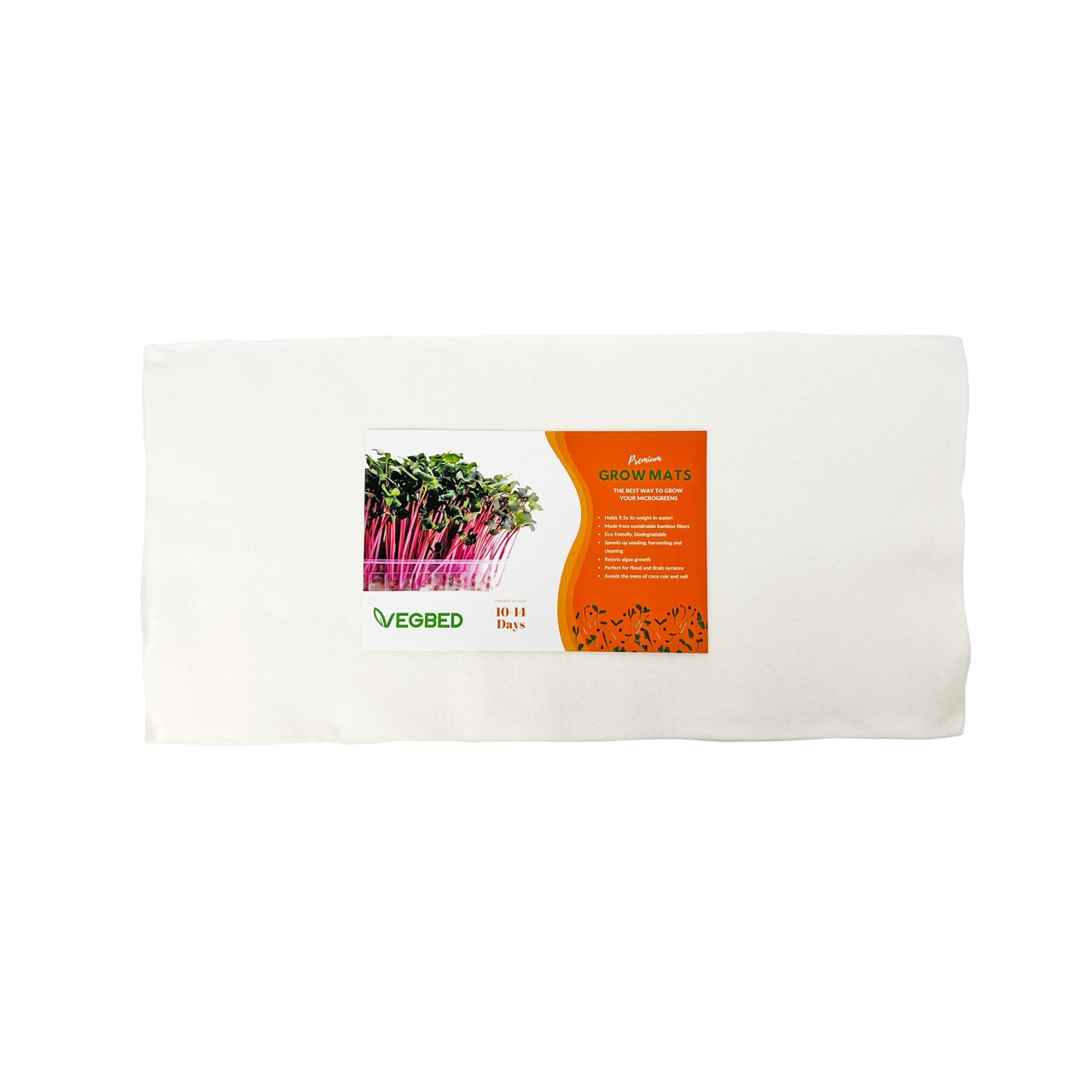This comprehensive guide will walk you through the key steps to creating a successful microgreens subscription box service.
1. Market Research and Planning
Understand Your Target Audience:Identify who your potential customers are. Are they home cooks, health enthusiasts, or restaurants looking for fresh ingredients? Understanding your audience will help tailor your offerings to meet their needs.
Analyze Competitors:
Research existing subscription boxes to identify their strengths and weaknesses. This will help you find your unique selling proposition (USP) and areas where you can stand out.
Set Clear Goals:
Determine what you want to achieve with your subscription box service. Whether it's brand recognition, customer loyalty, or profitability, having clear goals will guide your business decisions.
2. Product Selection and Sourcing
Choose Your Microgreens:Select a variety of microgreens to include in your boxes. Common options include arugula, radish, pea shoots, sunflower, and broccoli. To differentiate your offerings, consider including unique or seasonal varieties.
Sourcing Seeds and Supplies:
Partner with reputable seed suppliers to ensure high-quality produce. Decide on the growing mediums and equipment you'll use, such as soil or hydroponic systems. Using Vegbed's innovative, clean, and mess-free growing mediums, you can even offer live microgreens. This approach enhances freshness and allows customers, including chefs and restaurants, to harvest microgreens on demand.
Growing and Harvesting:
Establish a consistent growing schedule to ensure a steady supply of microgreens. Harvest at the peak of freshness to provide the best quality to your customers. With the right packaging, Vegbed's live microgreens can be an attractive option for chefs and restaurants, offering a unique selling point and ensuring maximum flavor and nutrition.
3. Subscription Model and Pricing
Subscription Options:Offer different subscription plans, such as weekly, bi-weekly, or monthly deliveries. Include options for both live and freshly harvested microgreens. For live microgreens, you can provide the option to deliver with or without trays. Since it's a subscription service, trays can be collected and reused for future deliveries, promoting sustainability and reducing waste.
Pricing Strategy:
Set competitive prices that reflect the quality of your microgreens and the convenience of the subscription service. Consider offering discounts for longer subscription commitments. The choice between live and freshly harvested microgreens can also be a factor in pricing tiers, with live microgreens offering a premium option for freshness and convenience.
Add-Ons and Upsells:
Enhance your subscription box by offering add-ons like recipe cards, specialty herbs, or growing kits. Upselling these items can increase your average order value and provide additional value to your customers. For live microgreens, consider offering optional accessories such as decorative trays or growing guides.
4. Packaging and Delivery
Eco-Friendly Packaging:Select sustainable packaging options that appeal to environmentally conscious consumers. For freshly harvested microgreens, use biodegradable or recyclable materials to maintain freshness. For live microgreens, consider using reusable trays, which can be collected and sanitized for future use, enhancing sustainability.
Reliable Delivery System:
Partner with dependable courier services to ensure timely and safe delivery of your boxes. For live microgreens, design packaging that secures the trays and prevents damage during transit, preserving the integrity and freshness of the plants.
Handling and Storage Guidelines:
Include detailed instructions on how to store and care for both freshly harvested and live microgreens. For live microgreens, provide guidance on how to keep them thriving until consumption, such as proper watering and light exposure. These instructions add value to your service and help customers get the most out of their subscription.
5. Marketing and Customer Acquisition
Establish an Online Presence:Develop a professional website featuring an easy-to-navigate online store, highlighting both live and freshly harvested microgreens subscription options. Utilize SEO strategies to attract organic traffic and enhance the visibility of your unique offerings.
Social Media and Content Marketing:
Leverage platforms like Instagram, Facebook, and YouTube to showcase your range of microgreens, including live varieties. Share engaging content such as recipes using freshly harvested microgreens, tips for maintaining live microgreens, and the health benefits of incorporating them into diets. Use visually appealing images and videos to demonstrate the freshness and convenience of your products, building a loyal following.
Email Marketing and Promotions:
Build an email list and send regular newsletters that include exclusive offers, product updates, and educational content about the benefits and uses of microgreens. Highlight the option to receive live microgreens, emphasizing the freshness and sustainability of this choice. Offer a discount on the first box or other promotions to encourage new subscribers to try your service.
6. Customer Service and Retention
Exceptional Customer Service:Provide excellent customer support to handle inquiries, manage subscriptions, and address any issues. A positive customer experience encourages repeat business and referrals.
Gather Feedback:
Solicit feedback from your customers to understand their preferences and areas for improvement. This can help you refine your offerings and enhance customer satisfaction.
Loyalty Programs and Rewards:
Implement a loyalty program to reward long-term subscribers. This can include discounts, free boxes, or exclusive products.
7. Scaling Your Business
Expand Your Offerings:As your business grows, consider adding more products like herbs, edible flowers, or other specialty greens. You can also explore partnerships with local chefs or wellness brands for collaborative boxes.
Explore New Markets:
Expand your service area or target new customer segments, such as businesses or health clubs. Consider offering corporate subscriptions or partnering with local grocery stores.
Continuous Improvement:
Stay updated on industry trends and continuously seek ways to improve your products and services. Innovation and adaptability are key to long-term success.
Conclusion
Launching a microgreens subscription box service requires careful planning, dedication, and a passion for providing high-quality products. By understanding your market, offering diverse and fresh products, and delivering exceptional customer service, you can build a loyal customer base and establish a thriving business.Remember, the key to success is not only in the quality of your microgreens but also in the overall experience you provide to your customers.



